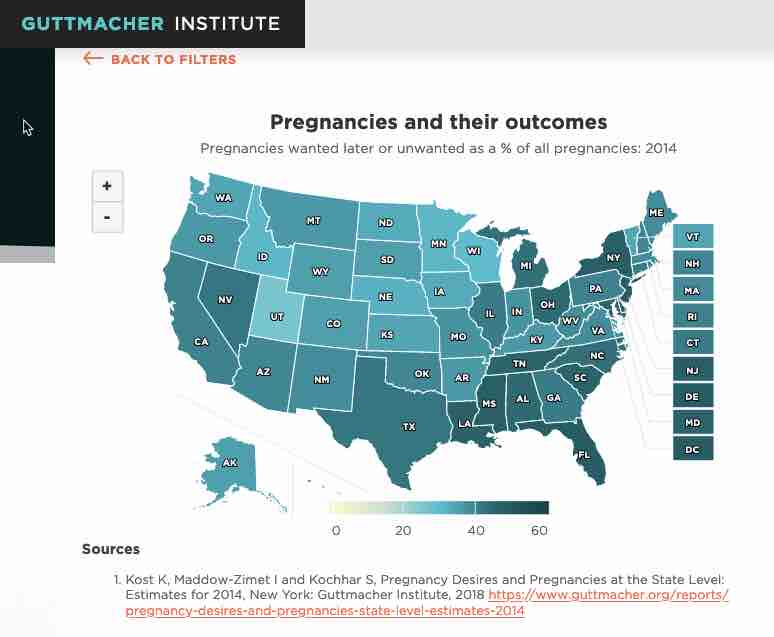On average, U.S. women want to have two children. To accomplish that goal, a woman will spend close to three years pregnant, postpartum or attempting to become pregnant, and about three decades—more than three-quarters of her reproductive life—trying to avoid pregnancy.1
DEFINING PREGNANCY DESIRES
Although researchers have been measuring unintended pregnancy for decades, the conventional approach to categorizing recalled pregnancy desires does not capture the complexities of women’s and couples’ desires, their experiences prior to pregnancy or the context in which a pregnancy occurs. As a result, sources of data available to characterize pregnancy desires and experiences are limited. The Guttmacher Institute is aware of these limitations, and our experts are working to address them in our work. The findings included in this fact sheet are the most current available.
An unintended pregnancy is one that occurred when a woman wanted to become pregnant in the future but not at the time she became pregnant (“wanted later”) or one that occurred when she did not want to become pregnant then or at any time in the future (“unwanted”). In this fact sheet, births resulting from unintended pregnancies are referred to as “unplanned.”
All other pregnancies are often termed “intended,” including those that were desired at the time they occurred or were wanted sooner than they occurred (“then or sooner”). At the national level, pregnancies to women who were indifferent or unsure about becoming pregnant are typically combined with pregnancies that were wanted then or sooner. It is important to note that women defined as having an “intended” pregnancy have not necessarily expressed an intention or plan to become pregnant.




